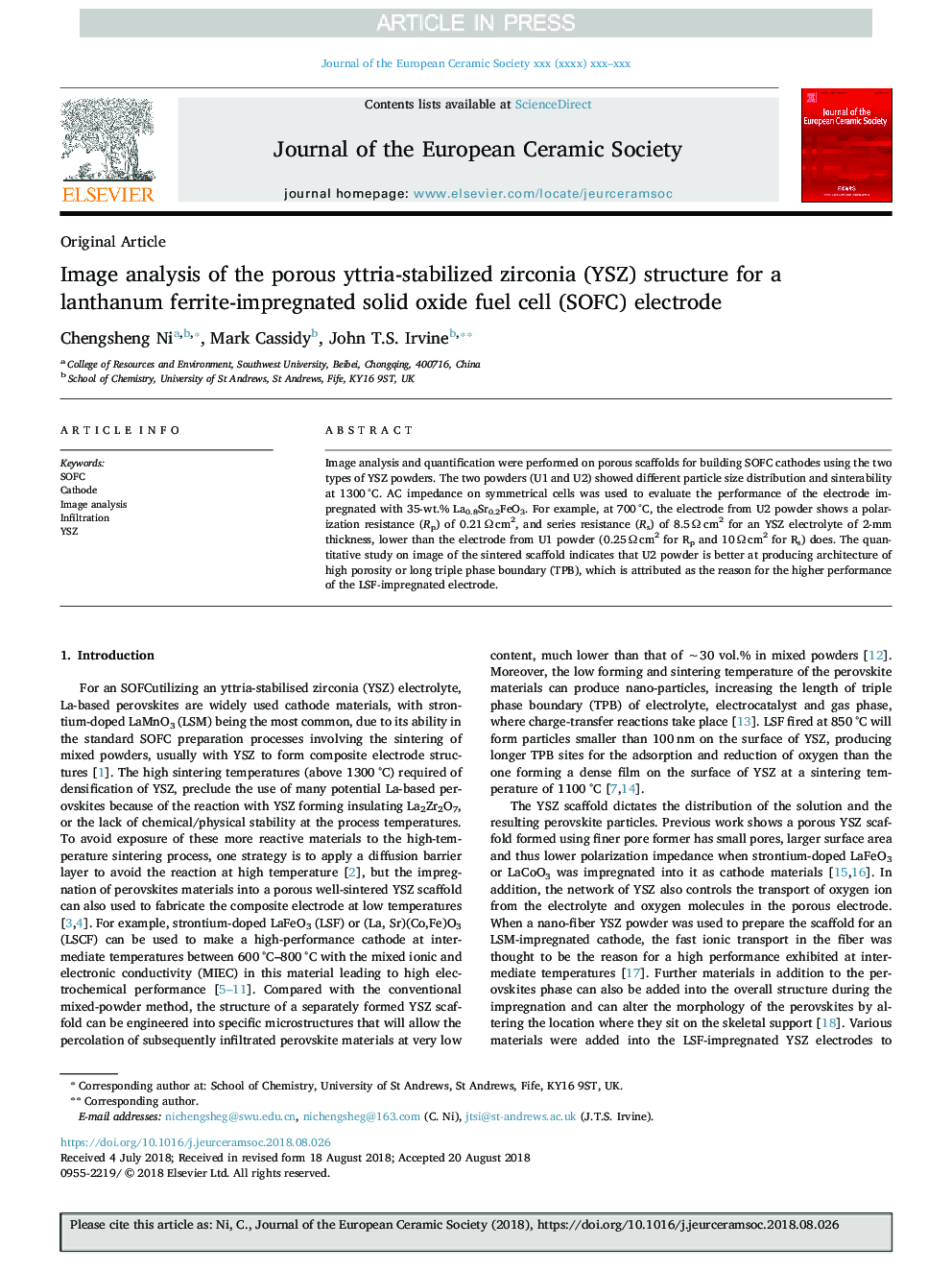| Article ID | Journal | Published Year | Pages | File Type |
|---|---|---|---|---|
| 10155495 | Journal of the European Ceramic Society | 2018 | 8 Pages |
Abstract
Image analysis and quantification were performed on porous scaffolds for building SOFC cathodes using the two types of YSZ powders. The two powders (U1 and U2) showed different particle size distribution and sinterability at 1300â°C. AC impedance on symmetrical cells was used to evaluate the performance of the electrode impregnated with 35-wt.% La0.8Sr0.2FeO3. For example, at 700â°C, the electrode from U2 powder shows a polarization resistance (Rp) of 0.21âΩâcm2, and series resistance (Rs) of 8.5âΩâcm2 for an YSZ electrolyte of 2-mm thickness, lower than the electrode from U1 powder (0.25âΩâcm2 for Rp and 10âΩâcm2 for Rs) does. The quantitative study on image of the sintered scaffold indicates that U2 powder is better at producing architecture of high porosity or long triple phase boundary (TPB), which is attributed as the reason for the higher performance of the LSF-impregnated electrode.
Related Topics
Physical Sciences and Engineering
Materials Science
Ceramics and Composites
Authors
Chengsheng Ni, Mark Cassidy, John T.S. Irvine,
